Content Marketing
Content Marketing – The definitive guide
This guide covers all basic aspects of content marketing and gives you the ins and outs of what it takes to run a content marketing business.
In this guide you'll learn:
- Content Marketing: Getting Started
- Content Production: Understanding Your Brand
- Content Marketing Strategies: Promoting Your Content
- Become a Great Content Marketer: The Action Plan Full List

Don’t expect to grow your business with traditional marketing methods. Those days are gone. You need a content marketing plan, and this chapter will give you the reasons why. Learn the history of content marketing, and understand what content creation is all about.
What Is Content Marketing?
Content marketing is one of those terms that gets quickly mixed and confused with other marketing terminology we hear today: audience, content creation, vlogging, social media, and more (watch out for the jargon).
So what is content marketing?
“Content is just . . . content, unless it’s driving behavior change in your customers and prospects. Then it’s called content marketing.” – Joe Pulizzi, author of Epic Content Marketing
In today’s world, we cannot rely solely on traditional marketing methods as they are becoming less relevant. The famous beginner’s mistake is to focus only on content creation, and as a consequence, abandon the marketing part of it.
On the other side, large businesses and established brands choose to focus only on marketing, without ever producing a single blog post or Instagram photo. That’s also wrong.
That’s why content marketing is king, and Bill Gates was right, back in 1996:
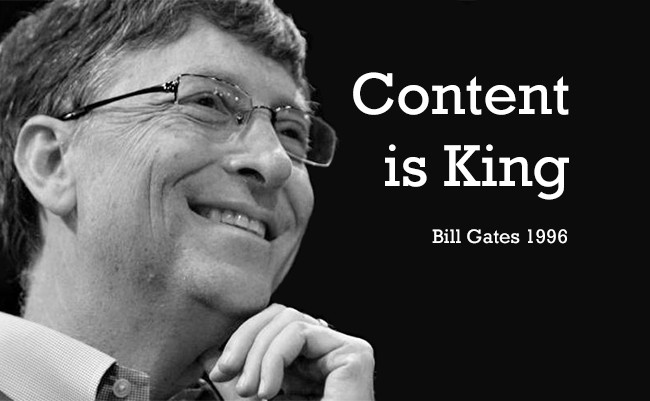
No matter how good your product is, if you don’t market it correctly, no one is going to buy it. The goal of content marketing is simple: develop and distribute high-quality information in your industry to drive behaviour change in your audience.
Once your audience is interested in what you have to say, they’ll engage with your content. Engagement is key because the relationship between your customers and your brand won’t end once they press the buy button.
“Marketing isn’t about shortcuts, hustle, or deception. Marketing is the art (and the science) of serving the people you seek to serve, to do better work by finding and satisfying needs.” – Seth Godin, Best Selling Author & Entrepreneur
That said, an effective content marketing strategy is to provide valuable information to your audience. What you’re saying (either with a blog post, vlogging, photos, podcast) is more important than what you are selling.
Be the inspiration for your audience to change their behaviour!
4 Powerful Benefits of Content Marketing
There are four main benefits of content marketing and reasons why you should use it as part of your content marketing strategy:
- Content marketing is inexpensive.
- Google loves content.
- Increases social media traffic.
- Creates brand awareness.
The first reason alone should be enough to convince you of the extraordinary benefits of content marketing.
- Content marketing is inexpensive
We know that a blog article has the potential to bring more visitors to your website. But how much does it cost for you to write this article? While inexpensive to create, your blog post will cost you time but will live forever.
And here is the catch: content marketing compounds over time, which means your customers or visitors would increase as you continue to add new content and upgrade old posts.
Compare this strategy with online ad campaigns that would cost you hundreds of thousands of dollars only to run for a limited time and then disappear from the face of the internet.
2. Google loves Content

Optimizing your posts, refining keywords, and adding rich and engaging content with images and videos can result in a lot more traffic. And Google loves more traffic! More traffic equals higher rankings, which leads to more visitors and can drive sales.
“The ultimate search engine would understand exactly what you mean and give back exactly what you want.”
–Larry Page, Google co-founder
According to VOX, Google sends more traffic than Facebook. Keep in mind that the single best way to rank higher on Google is through high-quality content creation.
3. Increases social media traffic
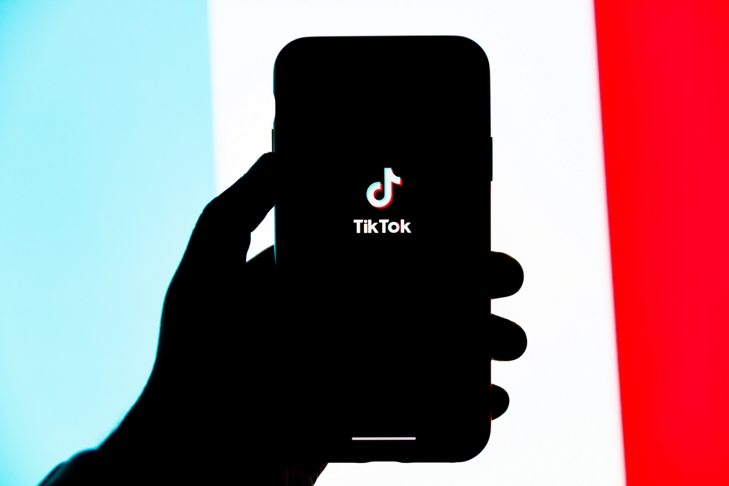
An engaged audience equals more followers on social media platforms like Instagram, Facebook, or Twitter. They’ll always be on the lookout for new content and product information: they’ll become true fans.
“A true fan is defined as a fan that will buy anything you produce. These diehard fans will drive 200 miles to see you sing; they will buy the hardback and paperback and audible versions of your book; they will purchase your next figurine sight unseen; they will pay for the “best-of” DVD version of your free YouTube channel; they will come to your chef’s table once a month.”
Kevin Kelly, 1000 True Fans
True fans share everything you create and have excellent engagement with your brand. They’ll help grow your social media traffic over time too. Keep your true fans close, and happy!
4. Creates brand awareness

Let’s imagine that you have an e-commerce website that sells beauty products. You wrote a blog post “Top 10 Beauty Products of the Year” which ranks at the top of search engines and keeps driving traffic to your website — every day.
Thousands of users searching for “top beauty products” will be directed to your website. The next time these users think about beauty products, they will remember your brand. Isn’t that beautiful?
The 30 Most Popular Content Marketing Types
The type of content marketing that brands use varies from business to business. There are many worthwhile types of content marketing paths for you to research, however, here we’ll focus on a list of the 30 most popular content marketing types to get you started. It will give you an idea of what’s possible in terms of content creation. Hopefully, you’ll find inspiration to think more about the right type of content for your business.
- Lists
- How to Guides
- Case Studies
- Testimonials
- Interviews
- Demos
- Product Reviews
- Comparisons and “Versus” Content
- Book Reviews
- Personal Stories
- Facts and Stats
- Worksheets
- Checklists
- Tools
- Contests
- Videos
- Webinars/Workshops
- Podcasts
- Vlog Posts
- Blog Posts
- User-Generated Content
- Forums
- AMA – Ask Me Anything
- Courses
- Newsletters
- Templates
- E-Books/Audio Books
- Infographics
- Surveys
- Quizzes
As you’ve seen it, the list is broad. So let’s focus on four types of content marketing that are trendy today and how you can leverage their unique power to increase traffic and sales.
- Podcasts
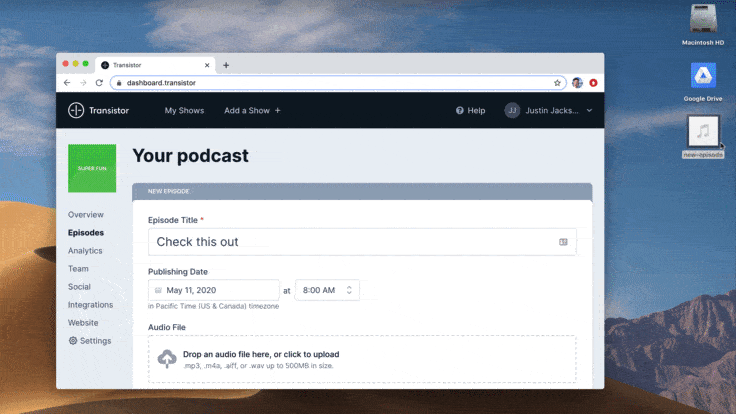
The best thing about podcasts is that they’re relatively simple to make, and everyone who has access to a smartphone and a decent mic can record one.
If you think a podcast may be the right content marketing type for your business, take a look at this great guide from the podcast hosting platform Transistor FM on “How to start a podcast”.
- Videos
Some people prefer to watch content instead of reading it, and that’s why video is such a popular choice among content marketers. HubSpot Research found out that video is the number one media type used in content strategy:

Videos should be entertaining and at the same time provide helpful information. Get this right and your audience will definitely stick with it, no matter if it’s just one or 10 minutes. It has become increasingly easier and cheaper to produce high-quality videos, and not enough businesses take advantage of this strategy.

Wistia has a great guide about their “Soapbox Station”: A Professional-Quality, Mobile Video Studio. It’s a DYI tabletop all-in-one studio for under £ 1000.
- Webinars

Webinars are a great way to build engagement, collect feedback and sell products directly to your audience. Depending on the duration, people can stay on a webinar for 20, 30, or even one hour. That’s a lot of attention given exclusively to one brand, so you shouldn’t miss this opportunity. Convert Kit has an excellent guide on webinars.
- E-Courses
People love educational content, and e-courses are a simple, out-of-the-box solution. It’s becoming increasingly popular among teenagers and young adults, and here is why:
Sometimes, learning at your own pace, having a community of like-minded students to discuss the material, and give each other feedback is a much better experience than just listening to a teacher.
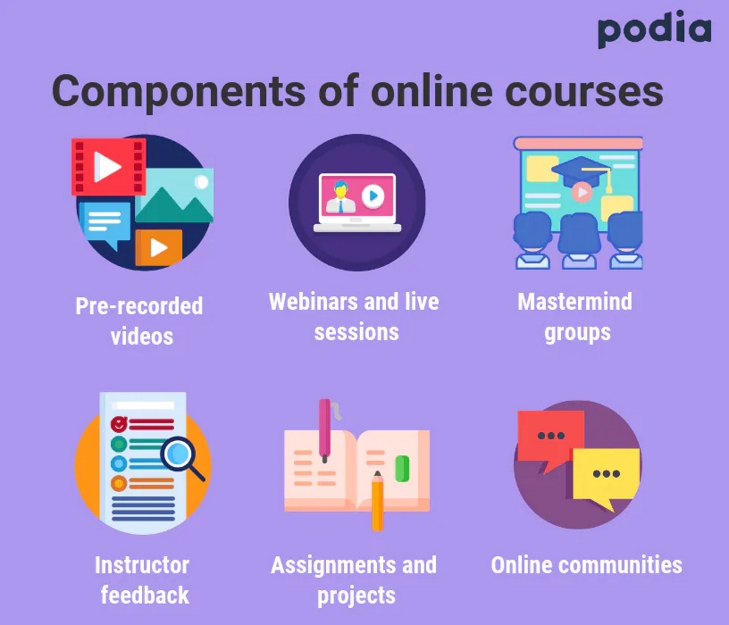
You can build authority and become the expert in your field once you start teaching it to your audience. Podia has an excellent article for content creators who are interested in making money through courses. Read more here.
Content Marketing Examples: Case Study
We looked at the extensive list of content creation types. Now let’s see a real case study of a successful business using a content marketing strategy to drive traffic, leads, and sales.
Typeform Case Study
- Brand: Typeform
- Content Marketing Type: Interactive video
- Results: 30k+ views, and 4,000 newsletter signups
“We’d made something in 36 hours that would usually take us 36,000. And that was exciting. We’d come together, we’d created something that didn’t exist the day before. In the end, isn’t that what it’s all about? – Eric Johnson, Typeform writer
Read the full story “Behind the scenes of Typeform Interactive Video”
What’s next?
This first chapter was all about giving you a solid foundation for content creation. We looked at the definition of what is content marketing, its benefits, and a successful content marketing example.
The rest of this guide will focus on how you define your content marketing strategy, finding your niche, and the process of developing a content marketing plan.
Are you ready?
Chapter 01 Recap: Content Creation Action Plan
- Create content that drives behaviour change in your customers. Find the right balance between content creation and marketing. You need both.
- Would you prefer to spend money on ad campaigns that disappear from the internet after a short period? Or invest your time in producing content that can live forever and continue to attract visitors over time?
- It all comes down to storytelling and connecting with your audience. Different channels mean different stories.
- Content marketing is a long term game and requires the right mindset — become an authority in your area, produce high-quality content, and nurture your audience.
- Educate yourself with successful case studies and content marketing examples. They can teach you a lot about what works and what to avoid.
Understanding your brand and figuring out who your audience is will produce content that better serves your unique niche. In this chapter, I’ll show you how to connect with your audience and the different content creation tools you’ll use to deliver what they want and need.
How to Define Your Content Marketing Strategy & Goals
For business owners, designers, and marketing managers, defining success is not as easy as an athlete’s definition of success: which is to always win. There is an infinite number of business models and innovative approaches that can drive your business to success. So what do you do?

What’s your goal? What do you want to achieve after you’ve created your content marketing strategy? This is where you must start.
To put a solid content marketing plan together and execute a winning content marketing strategy can be a painful process. Here is a list of six common content marketing goals to help you get started.
But remember, there is no silver bullet when it comes to content creation. You’ll have to find what works for you (and your business).
- Brand awareness
- Lead conversion
- Costumer conversion
- Costumer service
- Upselling
- Subscribers
So which of these goals make sense for your content marketing strategy? A few ideas:
- Do you want to grow a memorable brand?
- Or, are you trying to help drive more leads into your sales funnel?
- All you want are more subscribers?
- Rank higher in search results?
Don’t rush when deciding on your content marketing goals. Take a moment to think about these questions and where your business story can have the most impact. Get your mental juices flowing, and write down different versions of your content marketing strategy, always focusing on your goals.
Find Your Niche
Rule number one for content marketing success: Strive to be the top resource for your industry.
Rule number two: Think broad for marketing your content and narrow down your niche.
“Creating content for everyone is creating content for no one.” – Robert Mills, Head of Content at GatherContent
But how do you find your niche?
Before you start any content marketing plan, you need to know who your audience is and ultimately what you want them to do. You’ll need to create a buyer persona.
Your buyer persona is a standard profile from your website (or product) user. It features essential facts about users, such as behavioural traits, interests, and demographics.
Buyer persona is a big thing. There are books about the subject and even a Buyer Persona Institute.

Buyer Persona Example:
A Buyer persona serves as a representation of your target audience. They are the people who are most likely to benefit from your content and can become loyal customers.

HubSpot has a full guide on Buyer Personas and a free template – Read here.
It will take a bit of research, some guesswork, and small tweaks to create your buyer persona, but it’s worth it. You’ll end up with a clear picture of the user you should market your content and products.
Here are some questions to prompt you to think about your ideal audience:
- Who is he or she? What’s his/her job?
- What’s this person’s lifestyle and routine?
- Does this person need anything?
- Is he/she usually complaining about a problem?
- What is his/her biggest challenge?
- What publications or blogs does he/she read?
Why You Need a Content Marketing Plan
You’ve defined your content marketing goals and chose to focus on a narrow group of ideal customers (your niche). Congratulations! Now it’s time to get organised and set up your content marketing plan (or content creation plan).
A content marketing plan includes:
- A content calendar to get organised
- Content creation guide & tools (research, article formats, blog images)
- Content ideas and how to generate them
When you start to build a website for content marketing purposes, it’s natural to lose track of all your critical assets: notes, files, ideas, lists, etc. I don’t blame you. It’s just too much information to handle at once!
The key to content marketing success is to make sure you’re organized and consistent, so I like to start with an editorial calendar.
Content Calendar
Why a calendar?
It will give you an exact time and a dedicated space for your content to live.
“Your email is what others think you should work on. Your Todo list is what you think you should work on and your calendar is what you actually work on.” –
Des Traynor, co-founder of Intercom
I agree. What’s in the calendar gets done.
The Editorial Calendar Template:
The spreadsheet is an excellent way of listing down your articles and keeping track of them. It’s also a neat system since it contains all the pieces in one place that make up your article.
It can include the number of images, videos, internal and external links, but really, anything you want can be there.
I’m also a big fan of Trello for keeping track of ideas and articles. You can move things around easily and have the option to switch to calendar view, which makes things easier when planning your blog articles.

Anyway, your calendar will be a great resource as you build out your content marketing plan. Trust me!
Content Creation Guide & Tools
Content creation is broad. It includes maintaining and updating blog posts, writing new articles, adding blog images or videos, engaging in online commentary, and editing and refining your editorial calendar.
In this brief chapter, I’d like to cover what makes a great article and some tools that can help you with research, writing, editing, and publishing content for your audience.
- Research: the basic idea behind the research phase is to find out what your customers are asking for. Keyword research helps us define specific questions, words and sentences that people are searching for on the internet.

- Writing & Editing: Let’s use the keyword “content marketing” as an example. Once I have that, I’ll write an informational article such as “What is content marketing” or “why is content marketing important”. This would be one example of an “informative article”.
You can also write product reviews, tutorials, lists, comparisons, and much more. The types of blog posts you can write will depend on the topic you’ve chosen and your content marketing strategy.
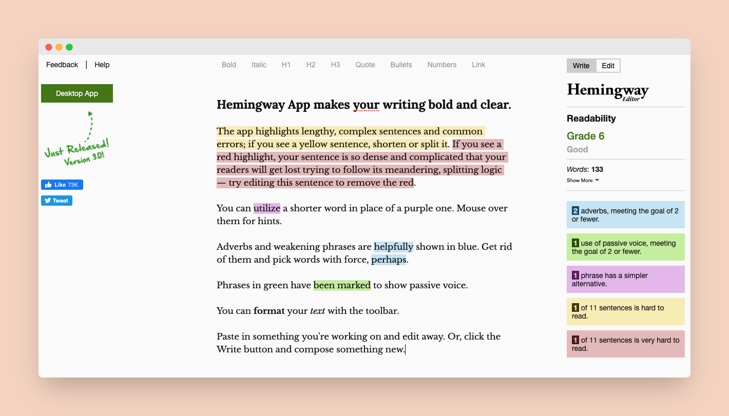
- Publishing: If you’re just publishing your first article, chances are it won’t impact your audience a lot. But that is better than not publishing at all. Never wait for perfection. High-quality content doesn’t have to be perfect.
All you need is to be consistent with your publishing schedule. The key to content marketing success is to make sure you stay organised and consistent.

List of Content Production Tools:
- Organization Tools
Trello
Pinterest
Google Sheets
Google Calendar - Writing & Content Creation
Canva
Storychief
Hemingway Editor
Grammarly
Google Doc. - Keyword & SEO
Keywordtool.io
https://answerthepublic.com/
SEMrush
Ahrefs
Moz Keyword Explorer
Content Ideas and How to Generate Them
There are many ways to find good topics, and we covered this in great detail with our “Beginners Guide to Blogging”.
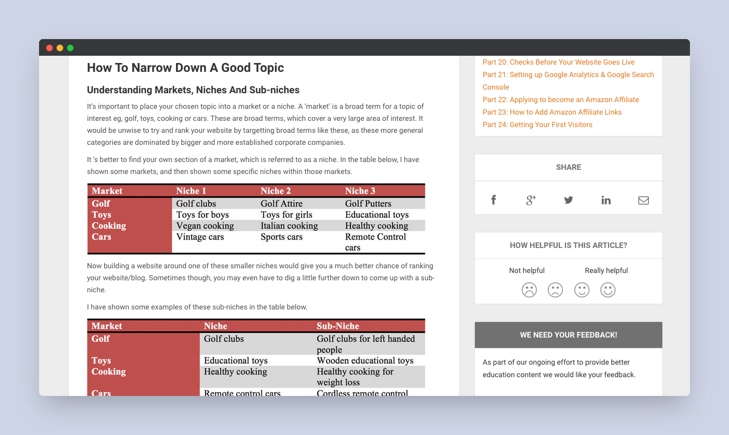
It’s important to notice that the work you’ve done so far (defining your goal, finding your niche, creating your editorial calendar, figuring out your content marketing plan, and doing a little bit of keyword research) has probably given you already a couple of ideas for writing your new blog or article.
But in case you are feeling stuck and need an extra push, here are two ways you can come up with new ideas quickly:
1. Look at the competition –– I said “look”, not “steal.” Got it? We are merely trying to come up with article ideas of our own. Go to competitor’s websites and come up with different concepts based on what they’re writing about (keywords usually).
Check their archive, most-read articles and everything that you can dig out to improve your research.
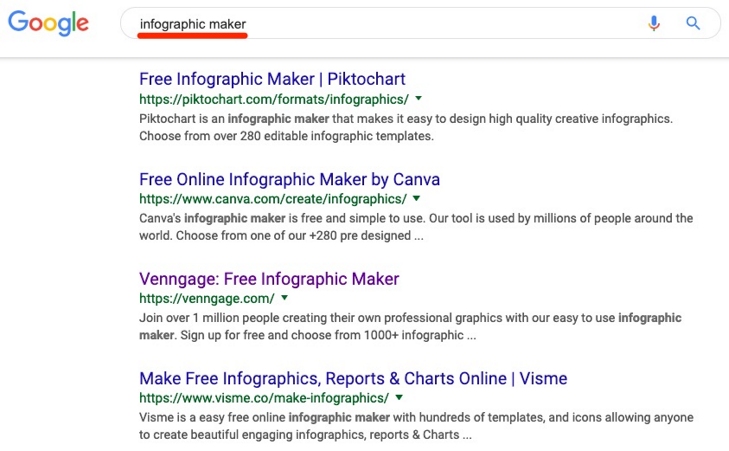
you can download.
2. Mind Mapping –– Mind mapping can help you get more specific with your thinking. If I’m thinking about healthy food, what types of healthy food? Vegan? Vegetarian? Detox programs? Low carb? And so on.
When you create a mind map it allows you to come up with ideas in a non-linear way, start to make connections between concepts, and then add structure to ideas to make a hierarchical map.
Evan, from Miro app
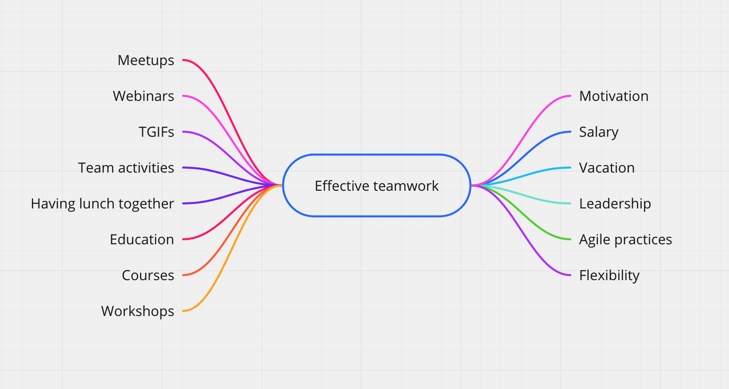
The online visualization tool Miro has a great article about Mind mapping.
The two exercises I mentioned above should help you find new ideas. But good ideas are not of much help when they are not considered high priority in your niche.
Prioritize topics that will best serve your audience and your business goals. A well-executed content marketing strategy and promotion can help you with that.
Want more?
Check out The Ultimate List of Blog Post Ideas for Content Marketers from Marketing Insider Group.

Not sure the idea you are looking for is a blog post?
Josh Pigford from Baremetrics built a system for prioritizing and scoring marketing ideas. Fascinating stuff. You can download the Google Spreadsheet here.
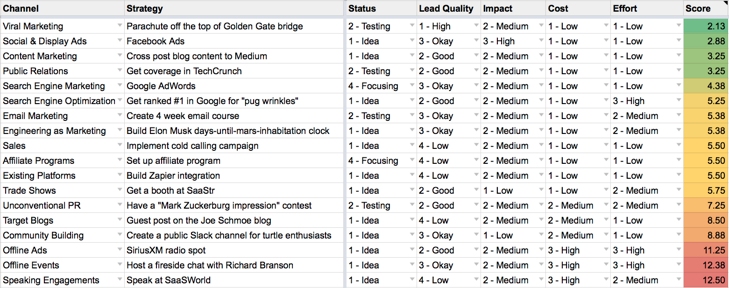
Book tip: “Where Good Ideas Come From”, Steven Johnson
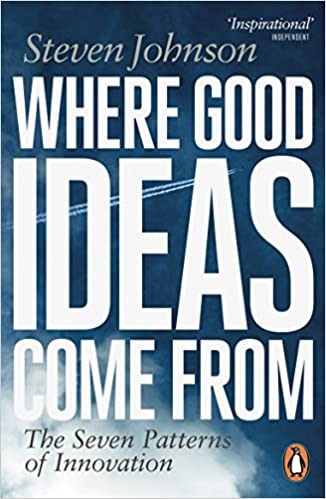
Chapter 02 Recap: Content Creation Action Plan
- Think about your business goals before you publish your first content piece. What do you (really) want?
- Choose a small niche and think broad for marketing your content. Defining your buyer persona will ensure that the content you produce will resonate with your audience.
- Stay organised and consistent. Splitting your time between being a manager and a content creator is part of the work.
- Choose your content marketing tools based on simplicity, and not on how many features they have.
- Coming up with ideas is only a small part of the process. Research, steal, mix, re-mix, and prioritise. If it resonates with your audience, your idea is good.
Ramp up your content creation by promoting and tracking the results. This chapter will look at content marketing examples so you can manage, publish, and market your content the right way. I’ll also show you how influencers and bloggers can take your business to the next level.
Why Is Content Marketing Important
Depending on your business, you may categorise your audience as “visitors”, “leads”, “prospects”, “readers”, “customers”, or “subscribers.” But the only way to choose the best way to reach each type of audience is to have a content marketing strategy in place.
Strategy plus promotion is why content marketing is the new branding.
“As marketers, we try to convince customers and prospects to generate content about our brands…It’s our job to create content worth sharing.” – Frank Strong, copyblogger
To be a content marketer, you need to feel comfortable with what I like to call “organising chaos.” It’s crucial to classify and define a common language in your business, so you can determine the type of sales you want and need to make.
You can achieve this with a sales funnel (or sales cycle). A sales funnel classifies customers, according to:
- They know nothing about us. Then, …
- …they know something about us and are interested to hear more. Then, …
- …they compare us to other solutions before making a decision. Then, …
- …they take action and trust us.
Another way to describe the different stages of your funnel is known as TOFU, MOFU and BOFU:
- Awareness & Discovery as top of the funnel (TOFU)
- Interest & Engagement in the middle of the funnel (MOFU)
- Decision & Purchase as bottom of the funnel (BOFU)
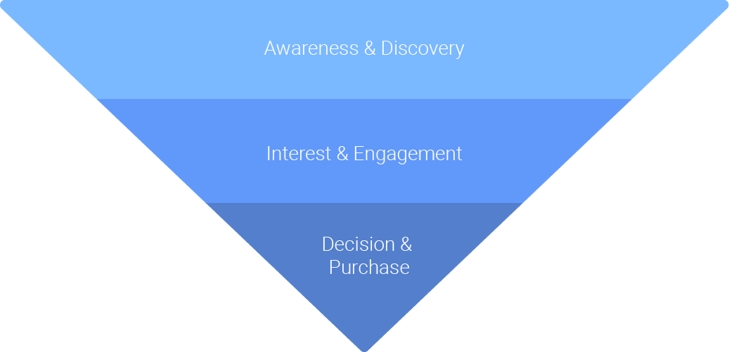
Learn more about TOFU, MOFU and BOFU with Similarweb Guide.
But: lead generation is only one small part of the marketing picture.
Content marketing is not about “what you sell”, it’s about “what you stand for.” Users are in control, and the traditional sales process has changed. The sales funnel will help determine your strength and weakness as well as where to focus your resources.
Managing the Content Creation Process
Mapping your content creation and the buying cycle for your product or service is essential for managing your business.
Don’t get stuck with the top of the funnel, where you just keep producing content and forget about conversions. Think about the middle of your funnel because sometimes all it takes is a small nudge in the right direction for your audience to get closer to the “buy” button.
In the beginning, you’ll be the one who is making sure everything is in place. You know your business goals, you understand your niche, and before you know it, you are publishing articles every week. But as you grow, your process will evolve.
Putting Your Content Creation Process on Autopilot
You can automate a lot of the work such as collecting ideas using Zapier and Airtable or pushing automated tweets every time you have a new piece of content.
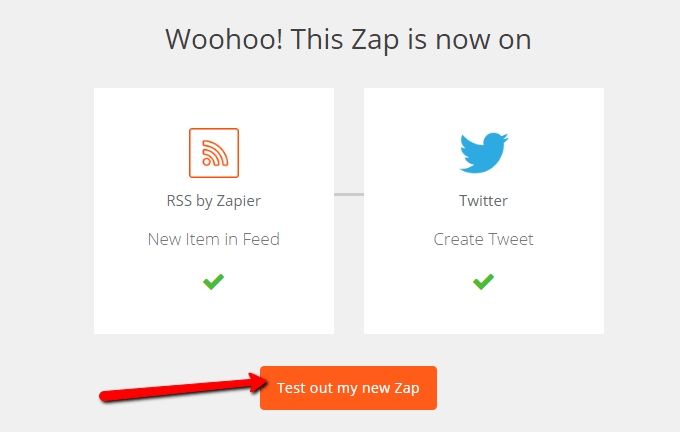
Read more on How to Effectively Automate Content Marketing from Marketing Insider Group.
Once things start to scale up, you need to be ready to delegate your process to others.
Take some time to think about the roles and responsibilities of people who can help you grow the business. Ensure that the needs of your customers and prospects come first and everyone in the team is aligned with your content marketing strategy.
Publishing Your Content
Here is what’ve done so far:
- Content marketing has been explained (and hopefully understood).
- Your niche and strategy delineated.
- You’ve figured out the best way to manage the content creation process.
It’s time for us to examine content distribution. Many marketers and founders fall into the product trap — building a product (or writing lots of articles) before thinking about distribution.
Think like a media company.
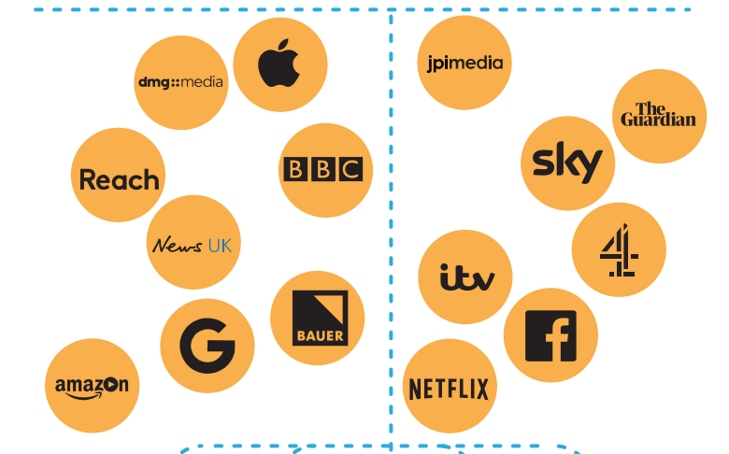
What are the industry trends that matter to your audience?
For instance, you might share data through an infographic. According to Hubspot:
Infographics are the fourth most used type of content marketing.
Or maybe is your audience looking for answers on Quora? Are you writing helpful answers on targeted forums?
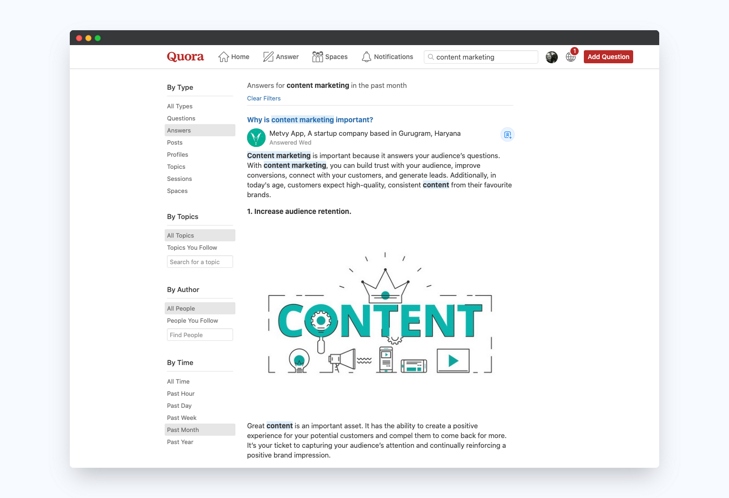
Your job is to solve the multimedia puzzle and engage with your customers. All of these different channels and methods improve your chances of ranking higher on search results.
To put a content marketing plan into action, you need to bring together the following components:
- What channel is most suitable for this type of content?
- What kind of costumer (persona) are you talking with?
- What is your content marketing goal? Traffic, ranking, sales?
- What is your primary content type? Is it blogging, podcasting, vlogging?
- How are you going to package your content for distribution?
- Is distribution scheduled in your editorial calendar?
All the ingredients are in front of you: your goals, your niche, your audience, the content types, and all of your assets. Mix these together and create something worthy of your audience’s time.
There is no one right way to do things, so experiment, get feedback, and iterate. Your content marketing strategy will define the channels and distribution platforms, not the other way around.
Tracking Results
The first measure of success is the actual content creation. Are your publishing high-quality blog posts, articles, videos, podcasts, etc.? And by high-quality, ask yourself whether you are:
- concise
- clear
- offering depth
- building engagement
Want to find out if you are publishing content like that?
Type your target keyword into Google.
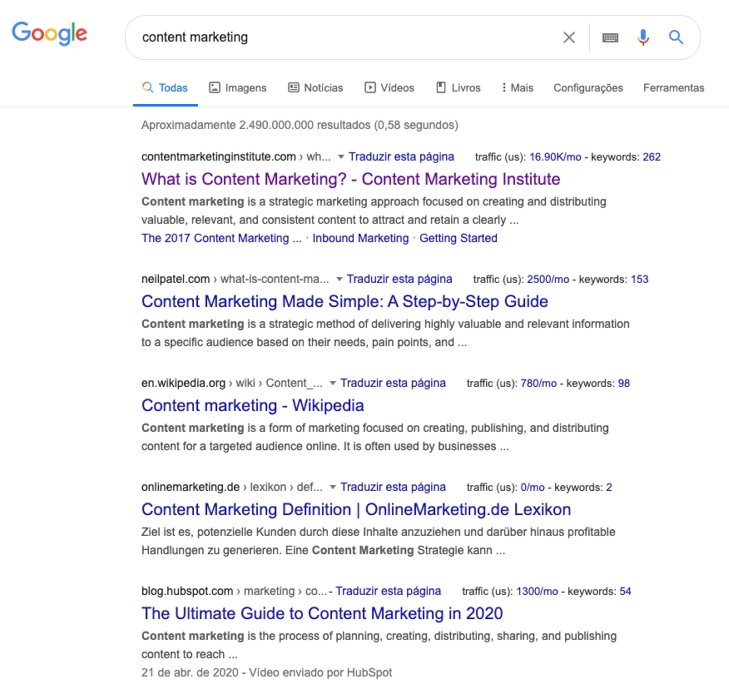
Are you in the top 10? Not even on the first page?
Sometimes it’s necessary to go back to the writer’s room and start from scratch. We’ve all done it.
“What gets measured gets managed.” – Peter Drucker, Management consultant, educator, and author.
So what should you measure? What should you track to reach your content marketing goals?
Well, it all depends on the content marketing strategy you’ve defined in chapter 2.
To recap, you want to look for three markers to see if things are going well with your content marketing plan. (Remember the sales funnel?)

- Traffic: High traffic is a good sign that your audience is actually finding your content.
- Leads: Converting that traffic into leads is even better. Traffic could be a vanity metric, insofar as you can have a million website visitors per day, but without any conversions, that million turns into zero. Filling forms, getting emails addresses, answering surveys — look for this type of markers.
- Sales: Obviously the ultimate indicator of content marketing success. Even better than the sale itself is knowing exactly HOW you made it. Understand, copy, repeat.
Answering a few questions can help improve your sales funnel and your content marketing results significantly. Think about the following:
- What kind of engagement are you getting with your content? Are people sharing it on their social platforms? Are they linking to it from their websites? How long are users on a web page?
- How many keywords do you rank for? How many first page keywords do you rank for? How many keywords are in the top five positions on Google?
- What sources bring you the most traffic? Organic Direct Social Paid Email Referral
A few reporting tools can give you an exclusive pass to the backstage of your content marketing strategy:
Marketing Your Stories with Partners
Understanding networks is a fundamental basis for understanding content marketing. Networks have the extraordinary power to unite us, spread our message, and share interests among similar groups of people.

No content marketing strategy is complete without a strong social media strategy.
“Content is fire. Social media is gasoline.” – Jay Baer, founder of Convince & Convert
Who are the biggest drivers of social networks today? Influencers.
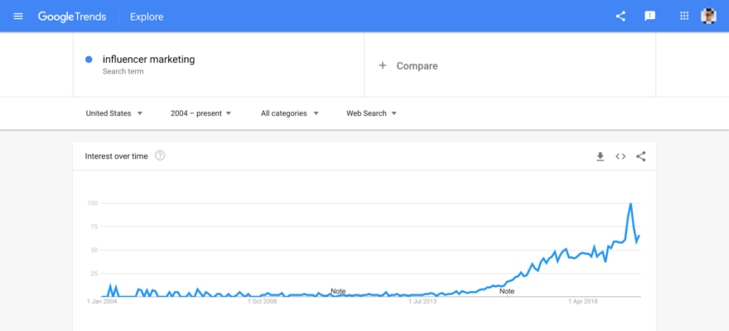
To put a content marketing strategy without thinking about influencers is to miss the single most important thing about network effects — it increases your power.

Getting Attention from Influencers
Influencers are busy people, like the rest of us. They are extremely active on social networks, spending their time sharing online content.
One strategy a lot of brands use to get on their radar is to give away free gifts. Either in form of a physical product, or “content gifts..
Or if you have the budget for it, you can just pay them — like any regular celebrity endorsement in traditional advertising.
Not for everyone, but it works.
Oberlo has a detailed guide on “Getting Started with Influencer Marketing”.
Chapter 03 Recap: Content Creation Action Plan
- As a content marketer, your job is to organise chaos. Start with your sales funnel.
- Find out how many areas of your content creation process you can automate. Be ready to delegate once you start growing the business.
- Think like a media company. Your content marketing strategy will define the channels and distribution platforms, not the other way around.
- Tracking results is essential to reach your goals, and analytic tools can become an obsession. Remember, not everything that matters can be measured.
- Utilise the power of network effects; influencer marketing, guest blogging, and podcast interviews increase your strength and expand your reach.
Content marketing is a long-term strategy, and moving forward requires the right mindset. The final chapter of our guide is a recap of everything we discussed in the form of an action plan. Hopefully, this will inspire you to become a great content marketer.
Become a Great Content Creator
Like many guides, books, and resources, I hope that this brief introduction to content marketing will bring you value. Even if all you get out from this article is one short paragraph, that would make me happy.
There are no silver bullet content marketing strategies. No plug-and-play solutions for content creation. No shortcuts, nada.
All you can and must do is to be consistent in the long run. That’s a true content marketing plan. Get your editorial calendar in order, lock yourself in the writer’s room, and market your masterpiece.
Define what you’re looking for and choose the right process. The benefits of content marketing can and will surprise you.
Content Marketing Success Takes Time
Just because you develop a couple of really great articles, blog posts, or videos doesn’t mean you’ll convert a lead into a sales opportunity tomorrow. Making a difference takes time.
Nurture your audience, sharpen your skills, and promote your epic stories.
The (Full) Content Creation Action Plan
Congratulations! You’ve reached the end of our full guide on Content Marketing. There is a lot to digest, so take your time and return to this guide as often as you need.
Here are 15 actionable content marketing ideas from everything we’ve discussed. Print them out, change, adapt, use them.
Start creating content today!
- Create content that drives behaviour change in your customers. Find the right balance between content creation and marketing. You need both.
- Would you prefer to spend money on ad campaigns that disappear from the internet after a short period? Or invest your time in producing content that can live forever and continue to attract visitors over time?
- It all comes down to storytelling and connecting with your audience. Different channels mean different stories.
- Content marketing is a long term game and requires the right mindset — become an authority in your area, produce high-quality content and nurture your audience.
- Educate yourself with successful case studies and content marketing examples. They can teach you a lot about what works and what to avoid.
- Think about your business goals before you publish your first content piece. What do you (really) want?
- Choose a small niche and think broad for marketing your content. Defining your buyer persona will ensure that the content you produce will resonate with your audience.
- Stay organised and consistent. Splitting your time between being a manager and a content creator is part of the work.
- Choose your content marketing tools based on simplicity, and not on how many features they have.
- Coming up with ideas is only a small part of the process. Research, steal, mix, re-mix, and prioritise. If it resonates with your audience, your idea is good.
- As a content marketer, your job is to organise chaos. Start with your sales funnel.
- Find out how many areas of your content creation process you can automate. Be ready to delegate once you start growing the business.
- Think like a media company. Your content marketing strategy will define the channels and distribution platforms, not the other way around.
- Tracking results is essential to reach your goals, and analytic tools can become an obsession. Remember, not everything that matters can be measured.
- Utilise the power of network effects. Influencer marketing, guest blogging and podcast interviews increase your strength and expand your reach.
- Make a copy of the Full Content Creation Action Plan here (file > make a copy)
